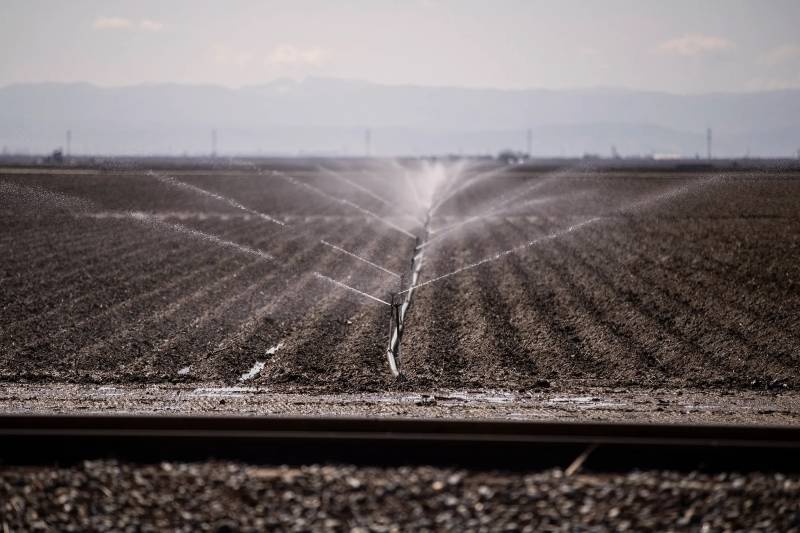“Some of the rates of groundwater level decline occurring in California really are some of the highest in the world,” said Scott Jasechko, a co-author of the study and an associate professor of hydrology, water resources and groundwater at UC Santa Barbara.
“It’s a sobering finding,” he said. “We’ve got a lot of work to do here in California.”
The research revealed that rapidly declining groundwater basins are virtually nonexistent in places without farming. Heavily farmed regions in drier climates, such as the San Joaquin Valley, Iran and parts of India, are especially hard hit.
Plummeting groundwater levels can cause drinking water wells to go dry. Streams can dwindle and disappear, and the desiccated earth can sink and collapse — shrinking the storage capacity of aquifers and damaging roads, buildings, levees and other structures above ground.
In California, thousands of wells have gone dry after years of drought and overpumping — spreading from the San Joaquin Valley to the Sacramento Valley during the most recent drought.
Land in parts of the San Joaquin Valley has subsided so much that it has damaged the California Aqueduct, which carries river water to Southern California, forced at least $187 million of repairs on the Friant-Kern Canal, and required millions more to fortify a levee around the sinking town of Corcoran to protect it from floodwaters.
The researchers analyzed more than 170,000 groundwater wells in more than 40 countries and reported “widespread acceleration in groundwater level deepening,” which they said “highlights an urgent need for more effective measures.”
The study provides a global database that backs up observations that have long worried water watchers.
“The major contribution is to bring into much sharper focus this global problem of groundwater depletion and over-pumping,” said Graham Fogg, a professor emeritus of hydrogeology at UC Davis who was not involved with the research.
“With groundwater, if it’s left unmanaged and unregulated, it’s going to be abused in many, many cases. And if that abuse goes on long enough, some basins will be exhausted of water.”
Violence over water is flaring around the globe. Water is a trigger, casualty and weapon in hundreds of conflicts just over the past two years — from Russian troops destroying a Ukrainian dam to cyberattacks on Israeli water infrastructure and Israeli military forces seizing or destroying Palestinian water sources. Clashes over water safety and scarcity have led to injuries and deaths around the world.
In California, water disputes roil the state, from the Scott and Shasta Rivers in the far north to the Bay-Delta and beyond.
San Joaquin Valley growers are still over-pumping
Ten years ago, alarmed by record declines in groundwater and thousands of dried-up wells, California lawmakers passed a law to stop overpumping. The Sustainable Groundwater Management Act requires local agencies to achieve sustainable groundwater use by 2040 for the most critically overdrafted basins and 2042 for basins considered less depleted.
